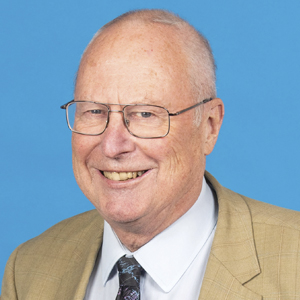
Dedicated. Determined. Driven.
Glasgow Professor Sir James Hough (BSc 1967, PhD 1971) spent more than half a century searching for gravitational waves. His perseverance finally paid off in 2015 when his research helped contribute to the discovery of the century. He shares with Avenue his 50-year journey.
It’s humbling and sobering to suddenly realise that after the best part of 50 years of research, a result appeared which is so important for science. It’s exciting to have been able to be part of something like that.
Back in 1972 when we started doing the experiments, we did see a direct observation of gravitational waves but nobody else had a detector running at that time and so it couldn’t be verified in any way. But I was sure that we had detected something. It gave me the feeling that it was the right thing to keep going, and that we would see something eventually.
We had some terrible troubles with people suggesting that the research was a waste of money and that we shouldn’t be doing it. The only reason that we kept going was sheer bloody-mindedness. We would not give in.
Gravitational waves are invisible ripples in the fabric of space-time. Albert Einstein predicted the existence of gravitational waves in 1916 as the basis of his general theory of relativity. However, he thought it would never be possible to detect them. Jim and his collaborators are therefore in the unique position of being able to say they have proved Einstein both right and wrong.
There were a lot of false claims of people having detected gravitational waves and then having to withdraw them. Just after we turned on the advanced LIGO detectors [LIGO is the US observatory where the gravitational waves were discovered], Sheila Rowan, Director of the Glasgow Institute for Gravitational Research, and I were sitting in my office on the phone to a colleague when suddenly, in the middle of the conversation, he said, “Something very odd’s happening. I just got a message that both detectors have a signal.”
I had really got to the stage of thinking that probably I wouldn’t see anything if I had to wait much longer, so it was fantastic. And of course, we have seen many more events since – about ten black hole events and one neutron star event.
This is like the beginning of a whole new phase. Phase one was making the discovery. Phase two is really getting the science out of the discovery. It’s not just what we’ve been able to prove so far – it’s what we’re going to be able to prove over the next 10 to 20 years.
I’m a bit of an instrument geek. It’s very satisfying to develop new techniques and play with new instruments that you could never personally do if it weren’t for a scientific project. And to develop apparatus that can be used in other fields, too – you feel you’ve actually done something useful for humanity if you do that. I’ve been very lucky, exceedingly lucky. I’ve been at the right place at the right time so many times in my life."
This article was first published in September 2019.

Professor Sir James Hough (BSc 1967, PhD 1971) became Professor of Experimental Physics at the University in 1986 and now holds the Kelvin Chair of Natural Philosophy. He was Director of the University's Institute for Gravitational Research from 2000 to 2009.

